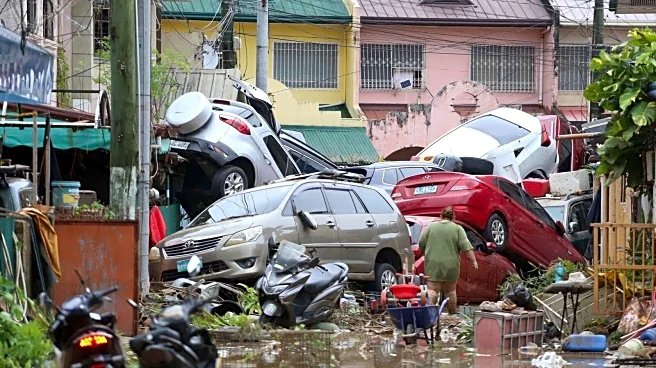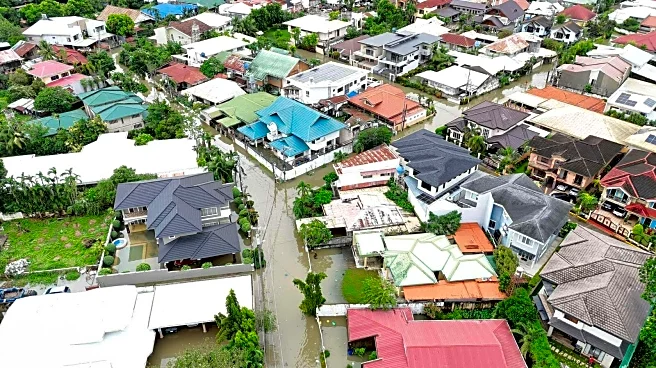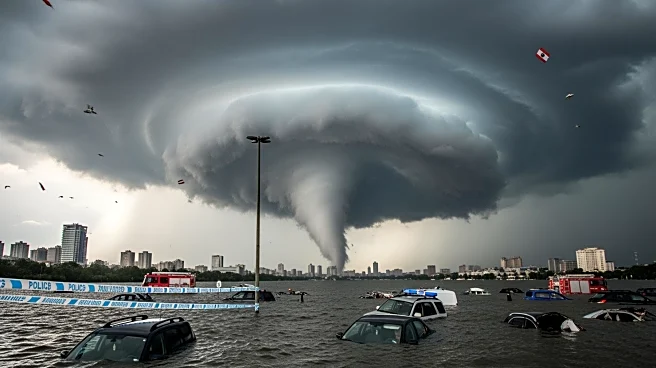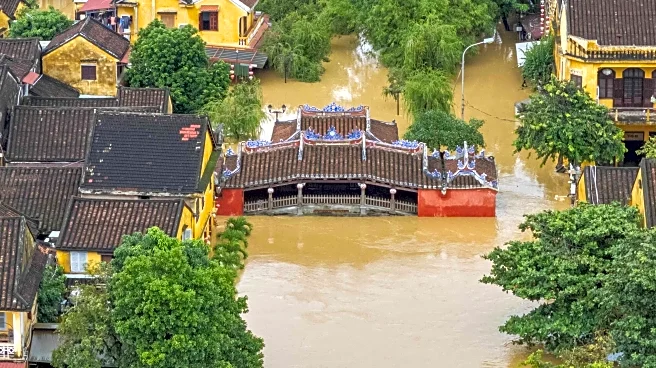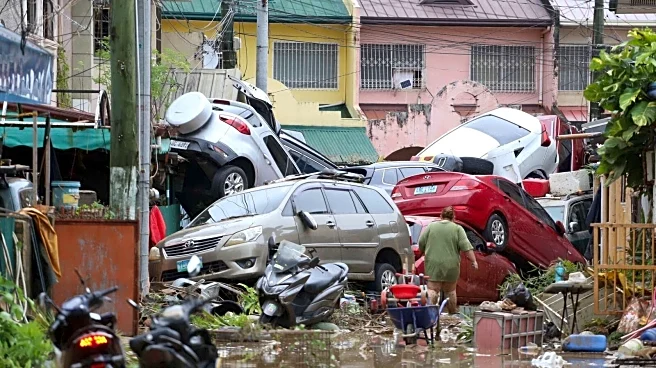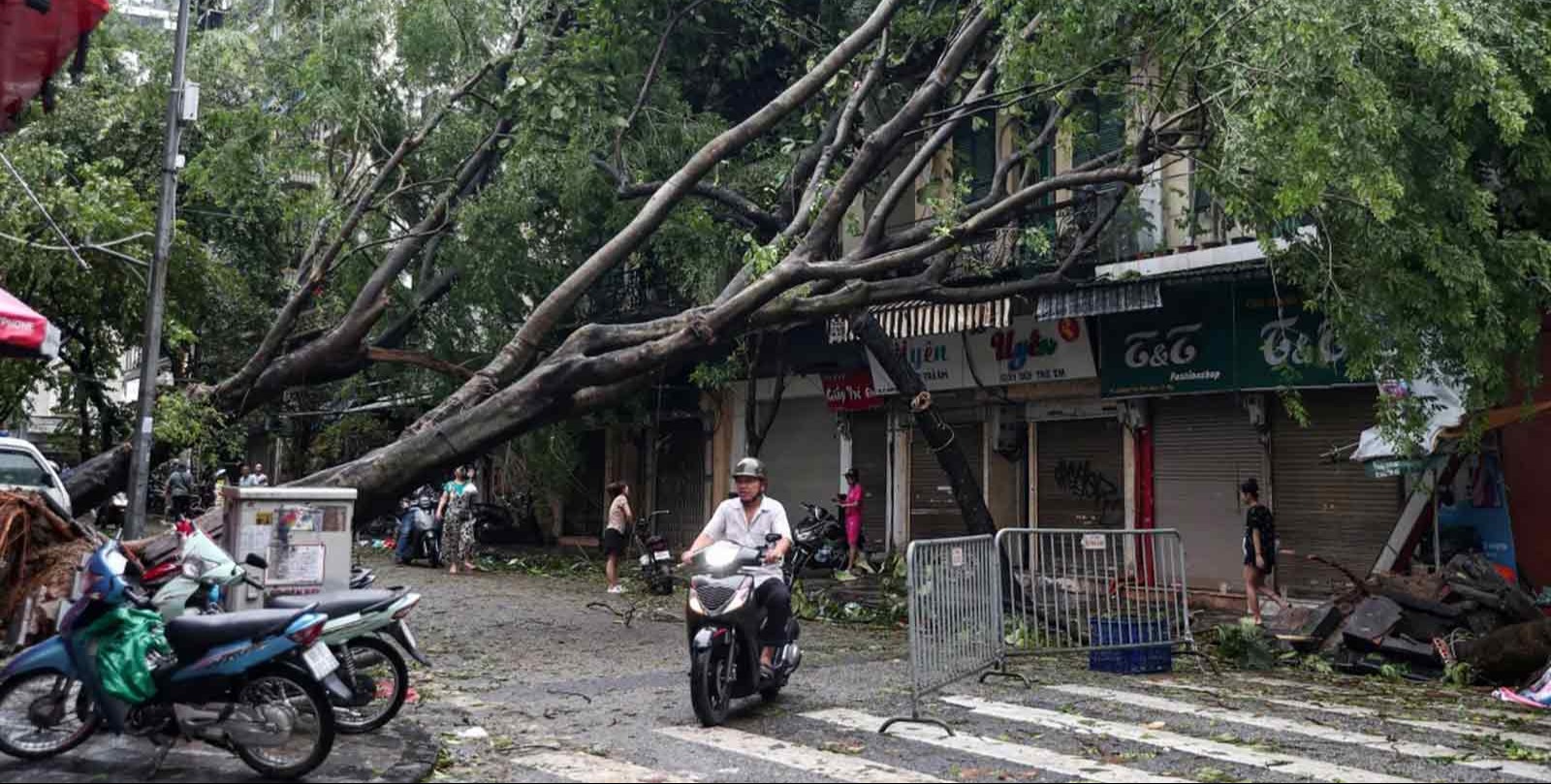What's Happening?
Typhoon Kalmaegi has struck the central Philippines, resulting in the deaths of at least 21 people and displacing nearly 400,000 individuals. The storm, known locally as Tino, brought heavy rains and widespread
flooding, particularly affecting Cebu province. Many residents were trapped on rooftops as floodwaters rose, and images from local media showed significant damage. The typhoon, with maximum winds of 130 kilometers per hour, is expected to move towards the South China Sea and potentially impact central Vietnam. The Philippines, frequently hit by natural disasters, is experiencing its 20th tropical cyclone this year.
Why It's Important?
The impact of Typhoon Kalmaegi highlights the vulnerability of the Philippines to natural disasters, which can have severe consequences for its population and infrastructure. The displacement of hundreds of thousands of people and the cancellation of over 300 flights underscore the logistical challenges faced by the country during such events. The storm's aftermath may strain local resources and necessitate international aid and support. Additionally, the frequent occurrence of such disasters raises concerns about climate change and its role in intensifying weather patterns, affecting global discussions on environmental policy.
What's Next?
As Typhoon Kalmaegi moves towards the South China Sea, there is a high risk of life-threatening storm surges in coastal areas. The Philippine government and local authorities are likely to continue evacuation efforts and provide relief to affected regions. International aid organizations may also step in to assist with recovery efforts. The storm's trajectory towards Vietnam could prompt similar preparations and responses in that country. Long-term, the Philippines may need to invest in more robust infrastructure and disaster preparedness to mitigate future impacts.
Beyond the Headlines
The frequent occurrence of typhoons in the Philippines raises ethical and environmental questions about global climate change and its disproportionate impact on vulnerable regions. The country's reliance on international aid during such disasters highlights the need for sustainable development and resilience-building strategies. Additionally, the cultural and social implications of repeated evacuations and loss of property may affect community dynamics and mental health, necessitating comprehensive support systems.


